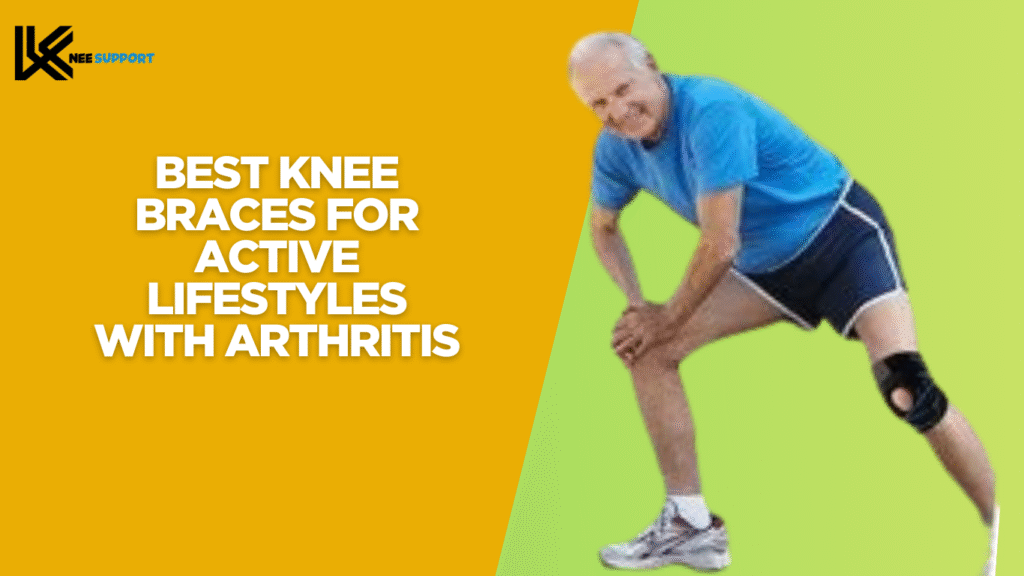“Find the best knee brace for a meniscus tear. Learn how braces reduce pain, improve stability, and speed up recovery. Get expert tips now!”
A meniscus tear doesn’t just hurt—it steals your freedom to move. Whether you’re an athlete sidelined by injury or someone struggling with daily knee pain, the right support can change everything. Knee Braces for Meniscus Tears stabilize weak joints, reduce swelling, and protect your meniscus from further damage. But with so many options, choosing wrong can delay healing or even worsen your condition. This guide cuts through the confusion, revealing which braces work best for different tears—so you can recover faster and reclaim your active life.
What Is a Meniscus Tear?
The meniscus is a C-shaped piece of shock absorption cartilage in your knee. It acts like a cushion between your thigh and shin bones. A tear can happen suddenly (like a sports injury) or slowly (from wear and tear). Symptoms include sharp pain, knee locking, and trouble bending the leg. Without treatment, it can lead to long-term damage, including arthritis.
Types of Meniscus Tears & Their Symptoms
Not all tears are the same. A medial meniscus tear affects the inner knee, causing pain when squatting. A lateral meniscus tear hurts the outer knee, especially when twisting. A bucket handle tear is more severe—it can lock the knee completely. A radial tear makes the joint feel unstable, like it might give out. Knowing your tear type helps pick the right knee brace for meniscus tear recovery.
How Meniscus Tears Affect Knee Function
A torn meniscus weakens shock absorption, putting extra stress on bones and ligaments. This can lead to swelling, stiffness, and even arthritis over time. A brace helps by improving weight distribution, taking pressure off the damaged area. It also keeps the knee stable, preventing further injury during movement.
How to Choose the Right Knee Brace for Your Meniscus Tear
Selecting the best knee brace for a meniscus tear isn’t one-size-fits-all. The right choice depends on several key factors, including the type of tear, your activity level, and comfort preferences. Here’s a detailed breakdown to help you make an informed decision:
Type of Meniscus Tear
The location and severity of your tear determine which brace works best:
Medial meniscus tear (inner knee): An unloader brace helps shift pressure away from the damaged area.
Lateral meniscus tear (outer knee): A stabilizing brace with side supports prevents excessive movement.
Bucket handle tear (severe, locking knee): A rigid hinged brace provides maximum immobilization, often needed post-surgery.
Degenerative tear (from aging/arthritis): A compression sleeve improves circulation while reducing swelling.
Level of Support Needed
Light support (Compression sleeves) – Best for minor tears or early-stage recovery. Reduces swelling but doesn’t restrict movement.
Moderate support (Wraparound braces) – Adjustable straps let you customize tightness. Ideal for daily activities.
Rigid support (Hinged braces) – Metal or hard plastic bars prevent side-to-side motion. Crucial for unstable knees or post-surgery.
Offloading support (Unloader braces) – Redirects weight away from the tear, great for arthritis-related meniscus damage.
Proper Fit & Comfort
A poorly fitted brace can worsen pain or restrict blood flow. Follow these guidelines:
Measure your knee circumference (most brands provide sizing charts).
Test the fit – You should fit one finger between the brace and your skin. Too tight? It may cut off circulation. Too loose? It won’t provide enough support.
Check for irritation – Look for breathable, moisture-wicking materials if you sweat a lot.
Activity Level & Lifestyle
Athletes/Sports: A hinged brace offers protection during pivots and jumps.
Office workers/Standing jobs: A light compression sleeve reduces stiffness without bulk.
Post-surgery recovery: A doctor-recommended rigid brace ensures proper healing.
Doctor’s Recommendation vs. OTC Braces
Mild tears: Over-the-counter braces (like sleeves or wraparounds) may suffice.
Severe tears or post-surgery: A prescription brace (like a custom unloader or hinged brace) is often necessary for proper alignment.
Final Checklist Before Buying
- Know your tear type (MRI or doctor’s diagnosis helps).
- Match brace support to injury severity.
- Ensure proper sizing (measure twice, buy once).
- Consider your daily activities (sports vs. desk job).
- Consult a specialist if unsure—physical therapists can recommend the best option.
Still Unsure? Try This Quick Guide:
Scenario Recommended Brace
- Minor pain, swelling Compression sleeve
- Moderate instability Wraparound brace
- Sports or high activity Hinged knee brace
- Post-surgery recovery Rigid immobilizer brace
- Arthritis + meniscus tear Unloader brace
- Choosing the right knee brace for meniscus tear recovery can speed up healing and prevent further damage. If pain persists, always consult an orthopedic specialist for personalized advice.
Knee Braces vs. Rehabilitation
A brace helps but doesn’t replace rehabilitation exercises. Physical therapy strengthens muscles around the knee, improving range of motion. Wear a brace during activity but avoid overuse—it can weaken muscles. For severe tears, doctors may recommend wearing it 4-6 hours daily.
EXOUS BODYGEAR Knee Brace Meniscus Tear Support

Key Features & Benefits
Patented 4-Strap System for Custom Support
Unlike generic knee braces with 2-3 straps, this 4-point attachment system provides even compression and stability around the entire knee. The adjustable straps allow you to fine-tune tightness for a secure, non-slip fit during movement.
MCL & LCL Stabilizers for Extra Protection
The built-in flexible stabilizers act like a “buttress,” reinforcing the medial and lateral ligaments—crucial for preventing excessive side-to-side motion that can worsen a meniscus tear.
Open-Back Design for Better Mobility
The two thinner rear straps reduce bulk behind the knee, allowing for greater range of motion compared to bulkier braces. This makes it ideal for running, basketball, hiking, and other dynamic activities.
Lightweight & Breathable Neoprene
At just 0.35 lbs, this brace won’t weigh you down. The neoprene material offers mild compression while remaining breathable—though it’s hand-wash only for longevity.
Stays in Place During Activity
Many users report less adjusting compared to standard braces, thanks to the secure hook-and-loop closures. Whether you’re sprinting or squatting, it stays put.
Feature Details
- Size Range Fits thighs up to 20″ (measured 3″ above knee)
- Material Durable neoprene
- Stabilizers MCL & LCL support bars
- Closure 4 adjustable hook-and-loop straps
- Best For Meniscus tears, bursitis, ligament instability
- Activity Level Sports (basketball, running), daily wear, recovery
- Care Instructions Hand wash only
Who Is This Brace Best For?
Athletes (runners, basketball players, hikers) needing stable knee support
Meniscus tear sufferers looking for targeted compression
People with bursitis or mild ligament instability
Those who hate bulky braces (slimmer than most rigid supports)
Not Ideal For:
Severe tears requiring immobilization (consider a hinged brace instead)
Very large thighs (max 20″ circumference)
Post-surgery recovery (check with your doctor first)
Pros & Cons
Pros:
- Superior stability with 4-point strapping
- Breathable & lightweight for all-day wear
- Stays secure during high-intensity movement
- Better range of motion than bulkier braces
- Great for sports & active lifestyles
Cons:
- Not for severe injuries (no rigid hinge support)
- Hand-wash only (can’t machine wash)
- Sizing can be tricky—measure carefully!
Final Verdict: Worth It?
If you need a stable yet flexible knee brace for meniscus tears, bursitis, or sports, the EXOUS BODYGEAR EX-701 is a strong contender. Its 4-strap system provides customizable support without restricting movement, making it a favorite among runners and gym-goers.
However, if you have a severe tear or post-surgery needs, a hinged or unloader brace may be better. Always consult a doctor for serious injuries.
Rating: ⭐⭐⭐⭐ (4.4/5)
Best for: Active adults, mild-to-moderate knee instability, sports recovery.
Shock Doctor Knee Compression Sleeve

If you’re looking for knee support that’s comfortable, breathable, and effective for meniscus tear recovery, the Shock Doctor Knee Compression Sleeve is a popular choice. But does it really help with pain relief, stability, and swelling reduction? Let’s dive into the details.
Key Features & Benefits
Compression for Pain Relief & Stability
- The pre-curved design provides targeted compression, which helps:
- Stabilize the knee joint to prevent further injury
- Increase blood flow to reduce swelling
- Support meniscus tear recovery without restricting movement
Breathable & Lightweight Neoprene
- Unlike bulky braces, this sleeve is made from N-Tex neoprene, which offers:
- Therapeutic warmth to promote healing
- Moisture-wicking to keep your knee dry
- Low-profile fit that fits under clothing
Closed Patella Design for Full Coverage
- The closed patella (kneecap) coverage ensures:
- Even pressure distribution around the knee
- Better protection during movement
- No slipping during workouts
Latex-Free & Comfortable for All-Day Wear
Great for people with sensitive skin because it’s:
✔ Hypoallergenic (no latex)
✔ Snug but not too tight
✔ Easy to wear daily
Feature Details
Size Small (check size chart for exact fit)
Material N-Tex neoprene (latex-free)
Design Closed patella, pre-curved compression
Best For Meniscus tears, knee pain, swelling
Activity Level MMA, running, gym workouts, daily wear
Care Instructions Hand wash recommended
Who Is This Sleeve Best For?
- Active individuals needing light-to-moderate knee support
- Meniscus tear sufferers looking for compression therapy
- People with knee pain or swelling from arthritis or overuse
- Athletes (MMA, runners, weightlifters) who want a slim, breathable sleeve
Not Ideal For:
Severe meniscus tears needing rigid support (consider a hinged brace instead)
Very large knees (check sizing carefully before buying)
Post-surgery recovery (consult a doctor first)
Pros & Cons
Pros:
- Great compression for pain relief
- Breathable & lightweight (no overheating)
- Stays in place during workouts
- Closed patella design for full coverage
- HSA/FSA eligible (check with your provider)
Cons:
- Not for severe instability (no side stabilizers)
- Sizing can be tricky (measure carefully)
- Hand-wash only (no machine washing)
Final Verdict: Should You Buy It?
If you need light-to-moderate knee support for meniscus tear recovery, swelling, or general knee pain, the Shock Doctor Knee Compression Sleeve is a solid choice. It’s comfortable, breathable, and stays put during activity—making it great for athletes and active lifestyles.
Best Post-Surgery – DonJoy Defiance III (top-tier support)
Conclusion
A knee brace for meniscus tears can speed up recovery, but it’s not a cure. Combine it with rest, rehabilitation exercises, and professional advice. Severe tears may need surgery—don’t ignore persistent pain. Ready to move without pain? Start with the right brace today.
FAQS
What is the best relief for a meniscus tear?
The best relief combines rest, ice, compression, and elevation (RICE). A supportive knee brace helps stabilize the joint, while anti-inflammatory medication reduces pain. Physical therapy strengthens surrounding muscles to improve stability and function. Severe cases may require surgery if conservative treatments fail.
Is compression good for meniscus tears?
Yes, compression helps reduce swelling and provides joint stability. A well-fitted knee sleeve or brace can improve mobility and pain during recovery. However, excessive tightness should be avoided to prevent circulation issues. Compression works best alongside rest and rehabilitation.
Is walking good for meniscus tears?
Gentle walking can maintain mobility but avoid overexertion. Use a brace for support and stop if pain increases. For severe tears, limit weight-bearing activities until healing progresses. Always follow a doctor’s or physiotherapist’s guidance.
Can meniscus heal without surgery?
Minor tears often heal with rest, bracing, and physical therapy. The outer meniscus has better blood flow, aiding natural recovery. Degenerative or complex tears may need surgical repair. Early intervention improves healing chances.
Will wearing a knee brace help a torn meniscus?
Yes, a brace reduces pain by stabilizing the knee and offloading pressure. Hinged braces work best for moderate tears, while compression sleeves help mild cases. Pair bracing with rehab for optimal recovery. Consult a doctor for persistent pain.

